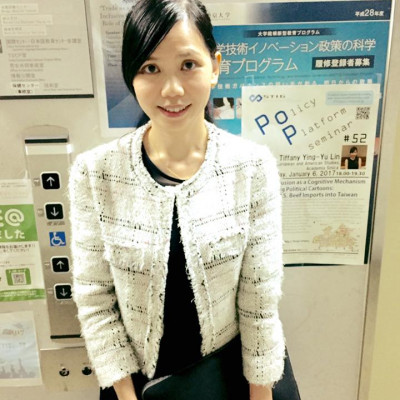Sessions / Classroom-based Research
Cognitive Discourse Functions and Multimodality in CLIL Science #2516
As CLIL (Content and Language Integrated Learning) has been widely implemented in bilingual education, the language which teachers use in class plays a key role in helping students learn content and language at the same time. This study aims to examine how content can be introduced through the use of language with different “Cognitive Discourse Functions” (Dalton-Puffer, 2013) to help students learn content knowledge and language effectively, including seven types of Cognitive Discourse Functions: describing, defining, explaining, evaluating, categorizing, reporting and exploring. This study aims to examine how Cognitive Discourse Functions can be achieved for better learning effects in bilingual science class through the use of language and multimodality, including pictures, songs, and videos. With a classroom-based approach, three bilingual science classes in 4th grade are observed, recorded, and analyzed. There are some data which have been collected for analysis. The preliminary study will be presented in the talk. Some examples of how Cognitive Discourse Functions can be categorized and used in bilingual science class will be included. Our preliminary findings show that “DESCRIBE” and “EXPLAIN” may be the most frequently-used cognitive discourse functions in the language use in bilingual science class, while the pictures and videos used to serve the function “EXPLAIN” is most frequently used in bilingual science class. This research hopes to provide suggestions for bilingual science teachers when and how they can use the language to help and facilitate their students’ learning. For example, what language would be most commonly used when teachers want to define in their teaching. Or when teachers are trying to evaluate, maybe there are some words or specific language to help students to instruct and comprehend.
Vocabulary Demand for Science Curriculum #2634
This study is a lexical analysis of spoken discourse supporting vocabulary development for English as a foreign language students who are learning science in English. The study analyzed bilingual science lesson from grade 4-6 grade, a lesson from each grade level. The AntWordProfiler was used to analyze the transcripts of the lessons. AntWordProfiler is a “freeware tool for profiling the vocabulary level and complexity of text” (Anthony, 2014, n,p.) that lists the words that occur in a text according to their frequency. Naiton’s (2006) BNC word family list of fourteen 1,000 word lists were used with AntWordProfiler software to show the percentage lexical coverage of the 14 groups of 1,000 words at which the words in the science lessons occurred. The study shows that L2 learners need to know 4000-5000 word families to understand 95% of the words in science lessons.
Classroom-based Research for Teaching and Learning Pronunciation at Elementary School: How to solve Taiwanese EFL Learners’ Pronunciation Problems of Interdental Sounds #2532
Pronunciation has been an important topic in English education, especially for English as a Foreign Language (EFL) learners and teachers. Based on the bilingual education policy in Taiwan (The Bilingual Nation 2030 policy, 2019), one of the objectives is to improve English communication skills. Pronunciation has been one of the key factors for effective communication. Most EFL studies (Hismanoglu, 2009; Bui, T. S., 2016; Ercan & Kunt, 2019) found many EFL learners face difficulties and make errors in pronouncing interdental sound /ð / and /θ/, however, few studies examined the interdental pronunciation errors specifically with a detailed analysis. With a classroom-based approach, this research aims to employ a qualitative analysis to investigate Taiwanese elementary school EFL learners and examine their pronunciation errors of the interdental sounds, including /ð / and /θ/ in English, providing a systematic analysis and phonetic-based learning strategies for elementary school teachers to solve the pronunciation problems of interdental sounds. The research questions are as follows: (1) What errors of Taiwan elementary school EFL learners would occur in pronouncing /ð / and /θ/ in English? (2)What is the pattern of these pronunciation errors when they appear in different positions of a word? (3)What are the causes of the problems in pronouncing /ð/ and /θ/? What is the solution for Taiwanese EFL teachers and learners? This study will conduct a survey to investigate Taiwanese elementary EFL learners’ pronunciation performances with the focus on interdental sound through recordings, interviews, and questionnaires to collect and analyze the general pattern and frequency of the pronunciation errors. Our classroom-based research findings would help to categorize the interdental pronunciation errors and pinpoint pronouncing errors of the interdental sounds in different positions (beginning, middle, or end) of a word, and propose learning strategies for English teachers and learners to solve the pronunciation problems with phonetic-based effectively.
Conception and evaluation of a German and bilingual teaching-project with a focus on biological content knowledge #2543
Introduction: Plenty of studies have shown that language proficiency of bilingually educated pupils is significantly higher as opposed to traditionally taught pupils (Burmeister & Daniel, 2002, p. 499). On the other hand, empirical research concerning the acquisition of content knowledge in bilingual teaching is practically nonexistent (Bohn & Doff, 2010, p. 72). Furthermore, there is a lack of teaching material in foreign languages that is suitable for ESL (English as a second language) pupils. The study's aim is to make up for these shortages via the conception of high quality bilingual teaching material and an empirical study that scrutinizes the acquisition of content knowledge.
Method: The first step was designing bilingual teaching material. Therefore, the topic "water" was chosen and elaborated for German school children at grade 7. The material was printed by the renowned German publisher Klett. The material was used to conduct a comparative study at 10 German schools. At each school, a teacher taught two classes for a period of four weeks. One of the classes used the mother language, the other one was taught in English. A third class served as a control group that was tested, but didn't receive teaching. Content knowledge was documented by specifically created tests in a pre-, post-, follow-up design. As an addition, empirically validated motivational tests accompanied the study (Wilde, 2009, p. 31). The researcher’s hypothesis was that the pupils taught in the mother language would gain higher content knowledge than the bilingual ones.
Results and discussion: As predicted in the hypothesis, the pupils taught in the native language outperformed the bilingual pupils in the matter of content knowledge. The differences were statistically significant, but not as huge as expected beforehand. It is also noteworthy, that the bilingual group learned significantly more than the control group. The motivational test revealed no statistically significant differences whatsoever. To compensate the lack of content knowledge, more lessons should be assigned to a bilingually taught subject. Further studies should monitor bilingually taught classes over a longer time period to discover how content knowledge improves throughout time in comparison to a control group.




